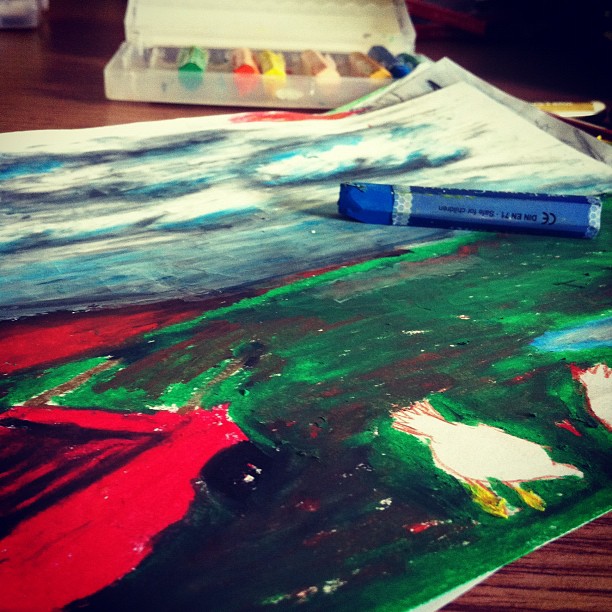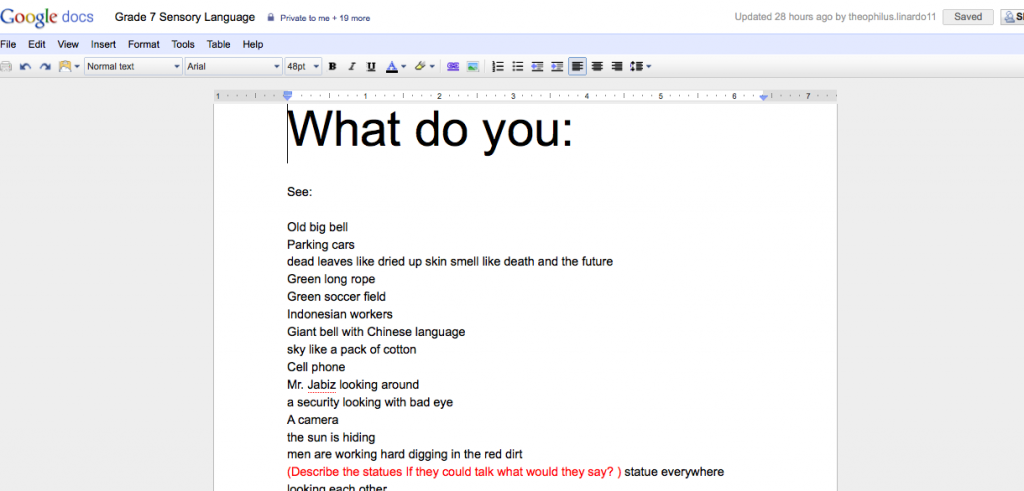Some teachers plan meticulously, then reflect exhaustively. I am not that kind of teacher. I like to plan with broad brush strokes– set a destination (assessment), decide what we must see on the way there (criterion, objectives) and take a map (rubric). I have been know to start a trip without the map, but I like to check in on it every once in a while. Once my unit is planned, I often improvise and go with my gut. Sometimes I will think of an idea minutes before class, and I’ll take a risk and run with it. Sometimes this helps, sometimes we get lost. Sometimes getting lost helps us get closer to where we want to be.
We are starting a poetry unit in grade seven, and I have been teaching middle school kids poetry for long enough to know it ain’t easy and/or cool. Problem is I love the stuff. I love the idea of the stuff. Throughout my career, I have tried different techniques to approaching poetry, but I seldom start with text or the word poetry.
I want students to understand that poetry is a way of life not a skill set. I will write more about poetry soon, this was meant to be a short post highlighting the power of whim.
Today was the first day back from break and after the initial- how was you week chit-chat– I told the kids to put their laptops away and read these words, which I projected on the wall:
so much depends
upon
a red wheel
barrow
glazed with rain
water
beside the white
chickens.
This is what I said:
I will put on some music. I want you to grab some paper, some crayons, color pencils, whatever you want and draw these words. There are few rules. Please remain silent and in your head. Then just draw. You are not done until the time is up, even if it feels like you are. Fill the whole page and take your time.
Then I turned on my iPod, put it on shuffle and we all started to draw. We listened to the Beastie Boys, Nirvana and Miles Davis. For an entire hour every kid, head down, drew. Not a word. No clarification, no griping, no nothing. Just music, poetry, and drawing. I wasn’t sure why asking kids to draw poem would be a good idea, or where it would lead us, when I started, but as I listened to the saxophone jazz and stained my fingers with pastel oils, and contemplated what actually does depend on the red wheel barrow, a funny thing happened–my brain began to work. Ideas began to grow. Flames flickered. Poetry became clear. I noticed the word glazed and I drew it. I created the world where this wheelbarrow lives. I could smell the depleted storm. I heard the chickens. I thought. I felt.
Then I got up and walked about the room. I could not hear the student thoughts, but I could see by what they were drawing that something powerful was happening in there. I let them continue for the entire class. Tomorrow we will explore the worlds they drew. We will ask questions about what they chose to draw and what they left out. We will discuss what they were thinking as they created their world. Then I will tell them that a poem is merely a door into a world they already know. A door intro their mind, their heart…
I start WWI poetry with grade 10’s tomorrow as well, and I will start the same way. We will draw:
Dark clouds are smouldering into red
While down the craters morning burns.
The dying soldier shifts his head
To watch the glory that returns;
He lifts his fingers toward the skies
Where holy brightness breaks in flame;
Radiance reflected in his eyes,
And on his lips a whispered name.
You’d think, to hear some people talk,
That lads go West with sobs and curses,
And sullen faces white as chalk,
Hankering for wreaths and tombs and hearses.
But they’ve been taught the way to do it
Like Christian soldiers; not with haste
And shuddering groans; but passing through it
With due regard for decent taste.
by Siegfried Sassoon and we might listen to this.



